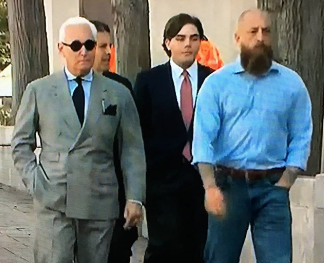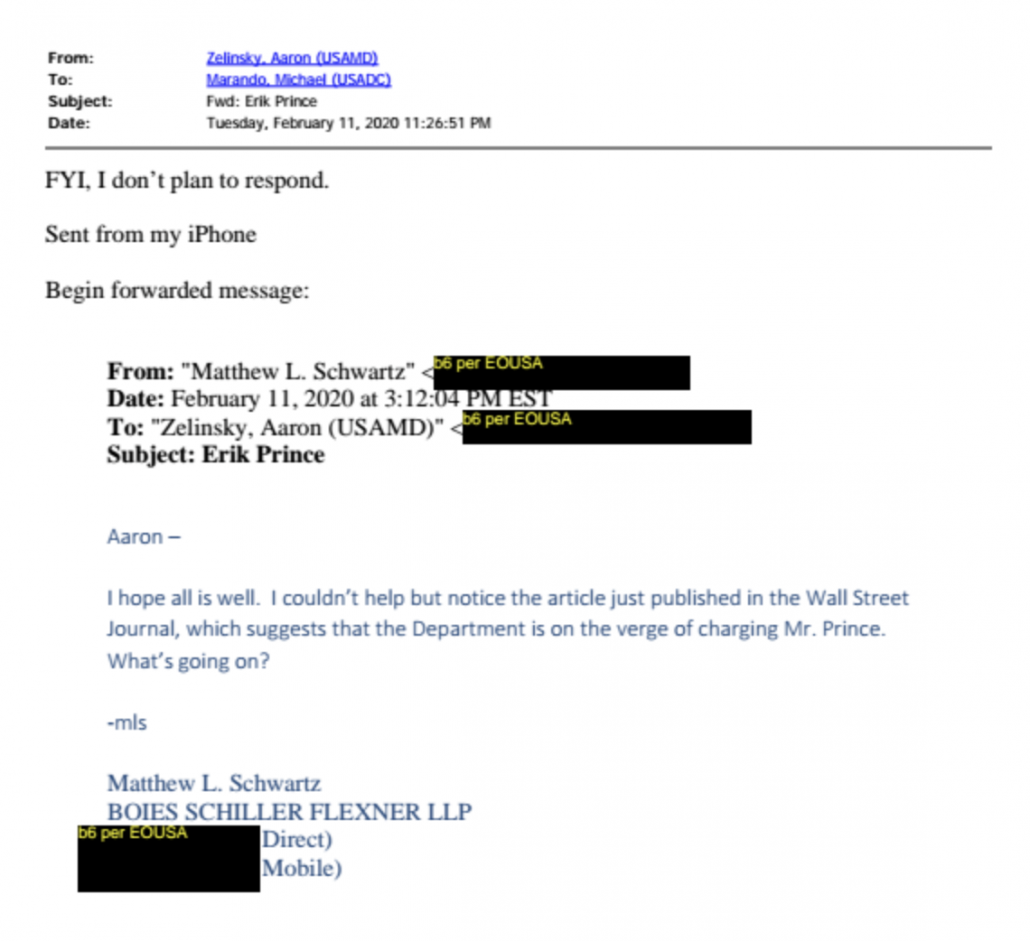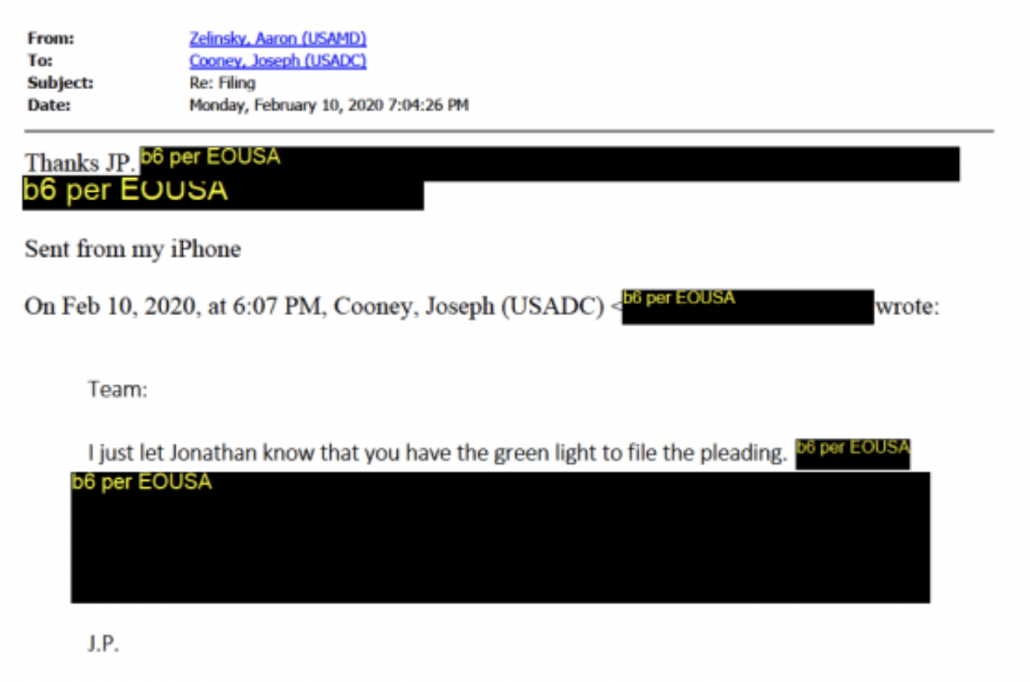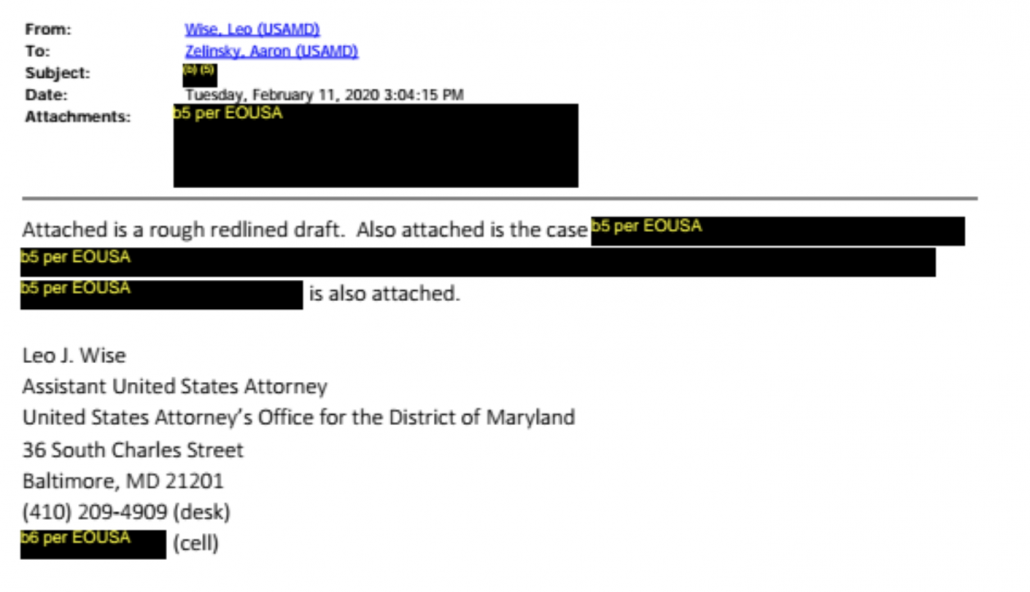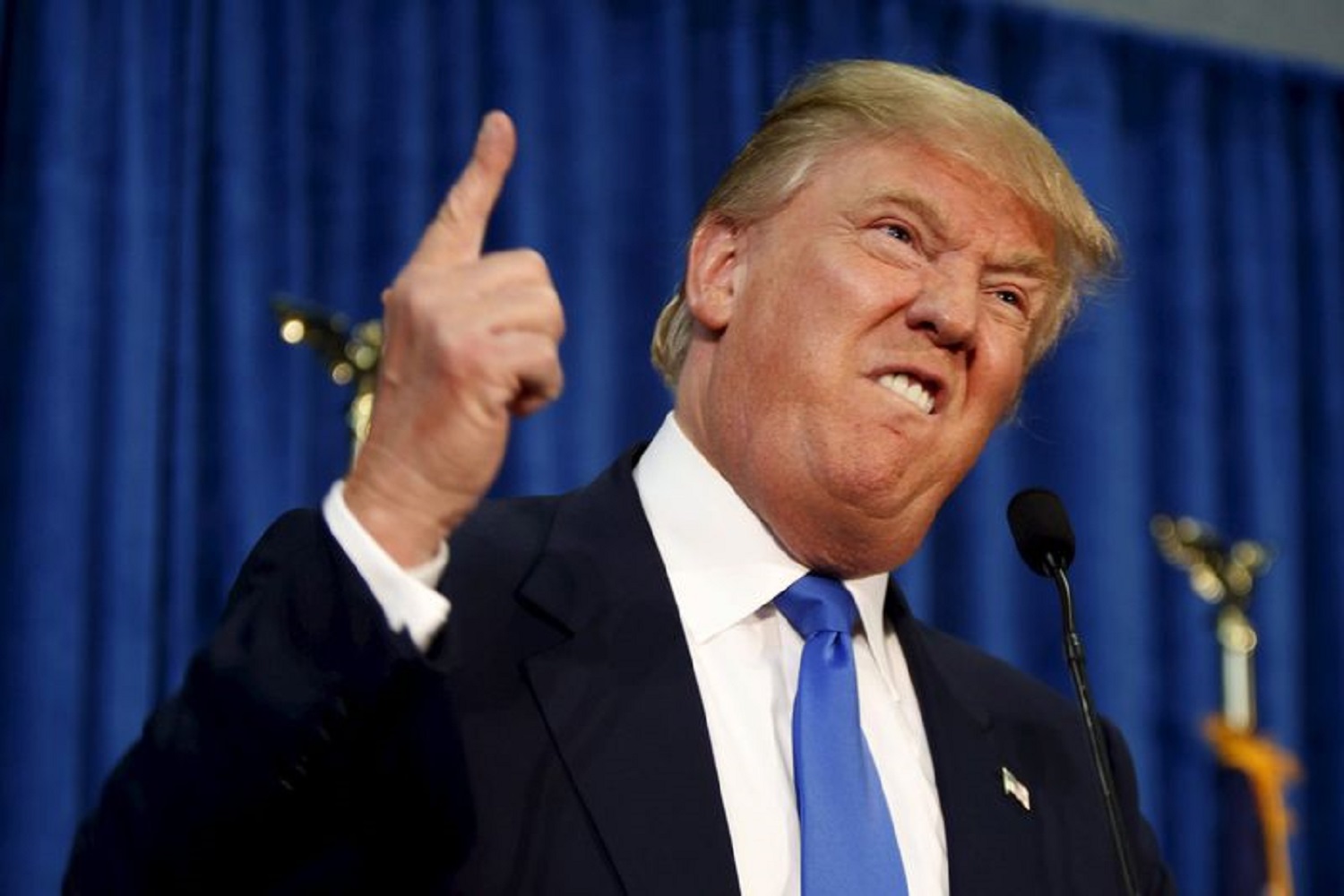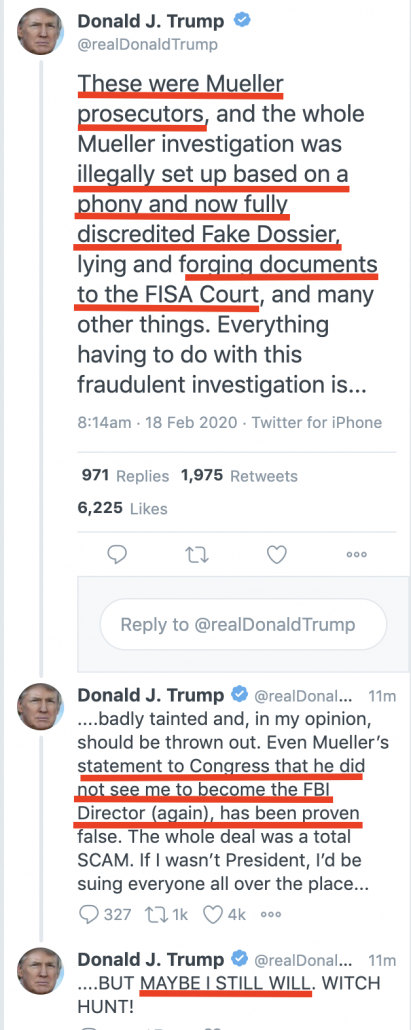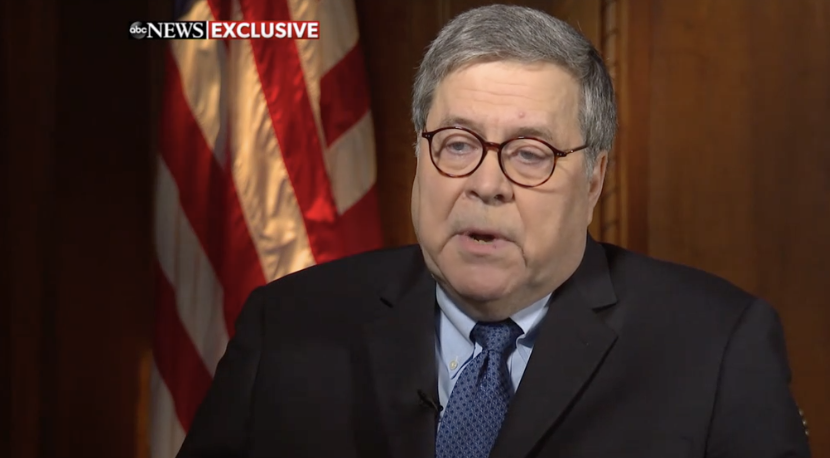Leaks on Top of Leaks Related to Roger Stone
In February, when I wrote up the latest performance art from serial hoaxsters Jacob Wohl and Jack Burkman, I suggested that their failure to hide the hand-written notes on one of the juror questionnaires they leaked from the Roger Stone jury might lead to quick discovery of the culprit.
But the poor execution may be the downfall. The released documents don’t actually reveal anything beyond what had already been identified during the initial frenzy against he foreperson (and since the foreperson gave credible responses in the hearing, backed by the testimony of two other jurors who said she was one of the last jurors to vote to convict). But Wohl and Burkman failed to redact the handwritten notes about a potential juror on one of the questionnaires.
This is going to make it easier to identify the potential sources for this document, something that ABJ was already trying to do in the hearing earlier this week.
There is a concerted effort on the part of the frothy right to violate every single norm of jury service, all to discredit a slam-dunk case against Roger Stone that even Bill Barr said was righteous. And for once these shithole hoaxsters may have done some good — in the form of helping the FBI figure out who’s behind it all.
Apparently, I was wrong.
Seven months later, as Will Sommer reported, the FBI continues to investigate Wohl and Burkman for potential witness intimidation.
The FBI is investigating blundering conservative operatives Jacob Wohl and Jack Burkman for a series of possible crimes, according to a document filed by federal prosecutors.
Ironically, the document revealing the investigation was filed just days after Wohl and Burkman staged a fake FBI raid on Burkman’s home in a bid for media attention.
The FBI investigation centers on Wohl and Burkman’s February release of confidential juror questionnaires from the trial of Trump associate Roger Stone. The FBI is investigating the pair for potential witness harassment, criminal contempt, and obstruction of justice, according to the filing.
[snip]
The HD Carrier subpoena relates to a series of phone numbers that Burkman contacted prior to the publication of the questionnaires, according to the filing. HD Carrier provides phone numbers for teleconferencing companies and other businesses that use temporary phone numbers, suggesting that the phone numbers were used only briefly by whoever Burkman was in contact with. The court filing notes that Burkman contacted the phone numbers around the time of the questionnaire release, according to a law enforcement review of his call records.
There are a number of interesting things about the request for call records, but not content.
First, as Sommer noted, this is a DC District order, but it was signed by the US Attorney and two AUSAs from Philadelphia. That’s not that surprising. The Stone prosecutors got the list of jurors that was part of this leak and passed it onto Stone’s team. They are potential (if highly unlikely) culprits for the leak. By asking outsiders to investigate it, DOJ avoids a conflict. This may be (though I always get proven wrong when I say this) the rare example where Bill Barr has appointed one of his favored US Attorneys to investigate something pertaining to Trump that doesn’t reek of interference.
It’s almost certain Wohl and Burkman are not the primary targets. The application notes that they, “may have been engaged in an attempt to influence or injure the jurors, as well as tampering with potential witnesses before the court,” which covers two of the three crimes under investigation, obstruction and witness tampering. And they did do that.
But the third, criminal contempt, probably wouldn’t apply to them. How could Amy Berman Jackson hold them in contempt, after all, when they were not party to her authority?
Another detail that supports that is the time frame — from last year during the pre-trial period. As explained in a hearing exchange after Wohl and Burkman had released the questionnaires, Jonathan Kravis went and got the list from the court on October 31 and sent it to the Stone team sometime thereafter.
In the hearing, Stone’s lawyer Seth Ginsberg tried to suggest that Stone’s team might not have had the list until closer to September 5, to which Michael Marando responded it was likely that it got sent out on November 1, which was a Friday.
THE COURT: Okay. Do you have any questions for this witness about any of these issues?
MR. GINSBERG: Just one. It may have been answered. I may have been distracted, Your Honor.
THE COURT: Just for the record, I don’t know that you’ve talked yet today. Can you put your name on the record.
MR. GINSBERG: Seth Ginsberg, appearing for Roger Stone.
THE COURT: Okay.
MR. GINSBERG: Do you recall the date on which it was transmitted to the defense?
MR. MARANDO: No, but it would have been close in time. My feeling, just going back and remembering, it was very close in time.
MR. GINSBERG: And the date that you said that Mr. Kravis went and created the list was what date?
MR. MARANDO: I don’t know the exact date, but it would have been shortened time to after we were invited to go and copy it down, and then we would have gotten the list and sent it over.
MR. GINSBERG: And you were notified on or about October 31st, 2019, that the list was available?
MR. MARANDO: That’s what the e-mail says.
COURT: Yes, it says they were notified at 5:24 p.m. on October 31st. So it would be my guess that you did not come on October 31st. I don’t know that we would have kept chambers open for that, but that you could come at any point between — the next day was a Friday, and then Monday was the return of the pretrial conference; is that correct?
MR. MARANDO: Exactly; that’s right.
MR. GINSBERG: And jury selection was on the 5th?
MR. MARANDO: Yes.
THE COURT: It began on the 5th, correct.
MR. GINSBERG: So it was somewhere between November 1st and November 5th?
MR. MARANDO: Yes, but more likely it would have been November 1st. It would have been right after that. We wouldn’t have — because then November 2nd would have been a Saturday. November 3rd would have been a Sunday. We wouldn’t have waited until November 4th to get this. I’m assuming we would have just hopped on it the next day.
In the interim 7 months, the FBI may have narrowed when the questionnaires got sent out. Which makes Ginsberg’s attempt to muddy that timeline rather curious (he is a very thorough lawyer, but I also find it interesting that the one lawyer not on the trial team posed these questions).
At the time, Amy Berman Jackson seemed to suspect two lawyers who had not filed an appearance in the case might have been the culprits. One of them, Tyler Nixon, was also interviewed to be a witness against Randy Credico.
THE COURT: So you worked electronically on them until you came for trial and then had a paper set?
MR. BUSCHEL: Yes. We were able to — as you can see, each .pdf is broken down juror by juror. So if you’re looking for 12345, you could just pull up 12345 .pdf.
THE COURT: So who had access to the .pdfs?
MR. BUSCHEL: Everyone on the defense team, lawyers, Mr. Stone. And do we — and there are a couple of lawyers that did not file appearances in this case. Do you want to know their names?
THE COURT: Well, yes. I seem to remember they were seated here at the beginning of trial, and then we didn’t have space for them inside the well of the court, and they had to step out.
MR. BUSCHEL: Right. THE COURT: But yes, if there were additional attorneys
who had electronic access to the information —MR. BUSCHEL: For a period of time electronically, Bryan Lloyd, Tyler Nixon.
But certainly Robert Buschel did admit that his client the rat-fucker had the files and could have sent them.
Ultimately, though, the real reason for this gag would seem to keep the information from Stone, who presumably expects a full pardon before Trump leaves office. If Stone were the culprit here, the charges would replace those he got commuted.
But magically this sealed application ended up on PACER, if that’s really how it happened, with people pitching the seemingly obscure site it got posted on to make it into a bigger story.
And I’m not sure it’s just the jury questionnaires at issue. As the application notes, Wohl and Burkman also claimed to have gotten Steve Bannon’s grand jury transcript. In it, he told some truths about the 2016 operation that he didn’t otherwise share with the FBI. Not all of it pertains to Stone (they had to redact it for trial). That suggests there may be more interesting details that would interest very powerful people.
As Sommer notes, this order was submitted just three days after the hoaxsters staged a fake FBI raid. It’s possible that they did know about the investigation, and the fake raid (for which they paid $400 per fake FBI officer) was just an attempt to alert co-conspirators.
And now a purportedly sealed call records order wasn’t properly sealed after all.

